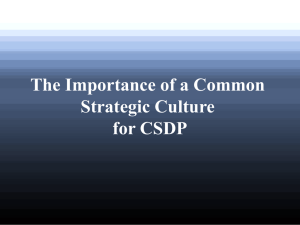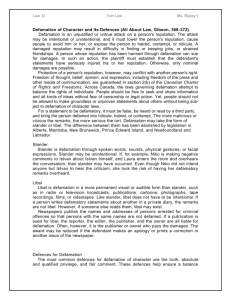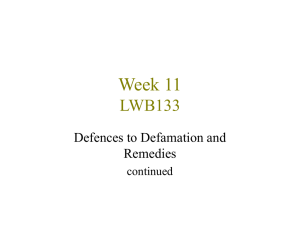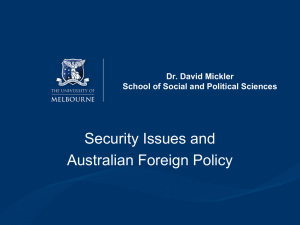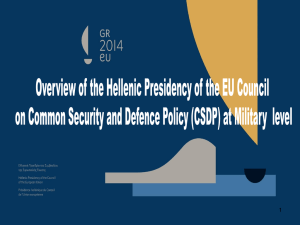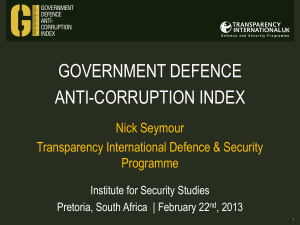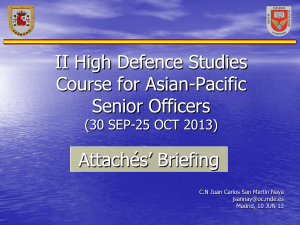DEFAMATION defences 2
advertisement
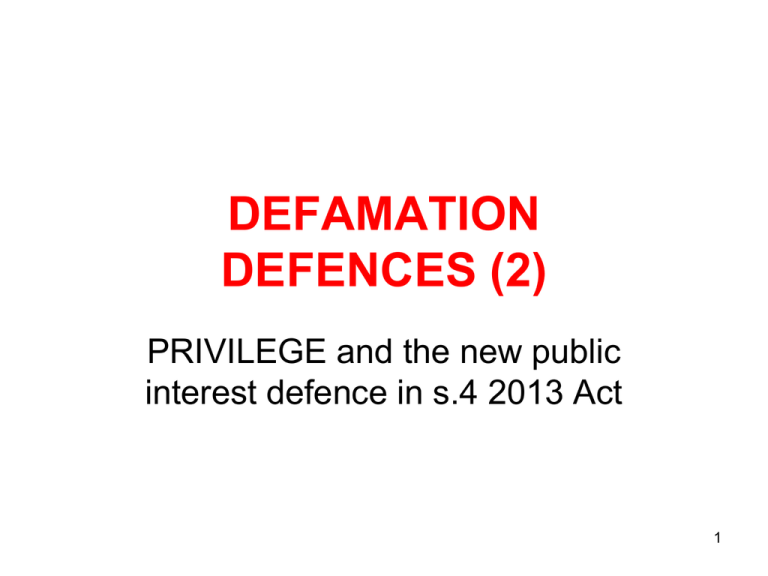
DEFAMATION DEFENCES (2) PRIVILEGE and the new public interest defence in s.4 2013 Act 1 WHAT IS PRIVILEGE? • Comes in a variety of forms • All are the result of public policy considerations that recognise that statements & publications made in certain circumstances should be IMMUNE from civil proceedings even when untrue and damaging. 2 ABSOLUTE & QUALIFIED PRIVILEGE • ABSOLUTE – strongest form – gives complete immunity if applicable so no action for defamation possible UNLESS the speaker waives immunity (Hamilton v Al Fayed) • QUALIFIED –Not as strong but can still provide immunity if criteria satisfied 3 ABSOLUTE PRIVILEGE • Applies to very narrow categories • These affect media the most: • Statements made in or as part of parliamentary proceedings - only applies to MPs or members of HL( media only entitled to Qualified privilege here) • Statements made in the course of judicial proceedings • Fair accurate and contemporaneous reports of judicial proceedings 4 Reply to an Attack/ Right to reply • Applies to anyone • This defence is covered by Qualified Privilege • If a person has been verbally attacked they have the right to defend themselves even if their statements are defamatory • See Henry v BBC for a recent discussion on this point 5 QUALIFIED PRIVILEGE 1 • Can be defeated by Malice • Aim of defence is to promote open & honest communications of a public or private nature that are in the interest of society • Applies to: • Fair, accurate & honest reports of parliamentary proceedings ( See Curistan case [2009]) 6 QUALIFIED PRIVILEGE 2 • Fair & accurate reports of judicial proceedings but goes beyond just what happens in court can apply to documents prepared for a criminal investigation • Statements made on occasions specified in Defamation Act 1996 s.15 (Schedule 1) as amended by 2013 Act • Statements made where there is a moral, legal or social duty in communicating the information - see the Reynolds defence 7 QADIR V ASSOCIATED NEWSPAPERS LTD (ANL) • Case from 2012 decided in High Court • Very helpful discussion and guidance about what not to do(!) when reporting proceedings whether criminal or civil. • Various case notes and commentaries available online 8 ‘REYNOLDS’ PUBLIC INTEREST DEFENCE An important relatively new defence developed by the HL out of Qualified Privilege Developed on a case by case basis. Slow early development but since the HL decision in Jameel in 2006 it has been used successfully on several occasions Abolished by 2013 Act 9 ELEMENTS • Essential questions to be answered are: • 1. Does the publication concern a matter of public interest? • 2. Were the steps taken to gather, verify & publish the information responsible and fair? 10 What is responsible journalism? • ‘responsible journalism is the point at which a fair balance is held between freedom of expression on matters of public concern and the reputations of individuals. Maintenance of this standard is in the public interest and in the interests of those whose reputations are involved’ Lord Nicholls in Bonnick v Morris [2003] 11 IMPORTANT CASES TO REMEMBER No.1 • Lingens v Austria (1986) 8 EHRR 407 • Reynolds v Times Newspapers [2001]AC 127 (the 10 points test) • GKR Karate v Yorkshire Post Ltd [2001] 2 All ER 931 • Henry v BBC [2005] EWHC 2787 QBD • Galloway v Telegraph Group [2006] EWCA Civ 17 12 IMPORTANT CASES No.2 • Jameel v Wall Street Journal Europe Sprl [2006] UKHL 44 (10 points reduced) • Charman v Orion Publishing Ltd & ors [2007] EWCA Civ 972 - the ‘Bent Coppers’ Case • Roberts v Gable [2007] EWCA Civ 721- ‘neutral reportage’ • Flood v Times Newspapers [2012] UKSC 11According to many SC decision put this defence ‘back on track’. Flood won his claim in respect of the online material. Damages - £60,000 13 The Human Rights Aspect • The ‘battle’ between Art 10 rights of defendant and Art 8 rights of Claimant. • Both Articles given equal weight. This is acknowledged by courts. How the 2 articles are balanced by the courts is a critical question in defamation law. 14 The effect of the defence • Operates as complete defence even if the material is untrue – once established the claimant can do nothing to regain their reputation. • Can appear unfair to blameless claimants • See Campbell-James v Guardian Media [2005] EWHC 893 15 Critics and commentary • See Jonathan Coad – thinks defence is in the interests of the media NOT the public. • Contrast Gavin Millar – questions whether Art 8 should encompass reputation at all. • See section of the Defamation Act 2013 on public interest defence– is this what is required? Will it be flexible enough? 16 Public Interest defence in new Act • S.1 It is a defence to an action for defamation for the defendant to show that • (a) the statement complained of was or formed part of a statement on a matter of public interest. • (b) the defendant reasonably believed that publishing the statement complained of was in the public interest 17 Continued…….. • The court must have regard to all the circumstances of the case [the 10 point list will still be useful here] • The statement can be on a matter of fact OR opinion. • Allowance must be made for editorial judgement. 18 Reportage (Roberts v Gable) • S.4(3) – If the statement complained of was, or formed part of, an accurate & impartial account of a dispute to which the claimant was a party, the court must in determining whether it was reasonable for the defendant to believe that publishing the statement was in the public interest disregard any omission of the defendant to take steps to verify the truth of the imputation. 19 New defences to look out for.. • Defences for Internet Service Providers who did not post the material complained of. S.5 does not affect pre-existing statutory/common law defences. • Note that in respect of unknown posters of material this defence is conditional on compliance with regulations/guidance just published by Ministry of Justice. 20


